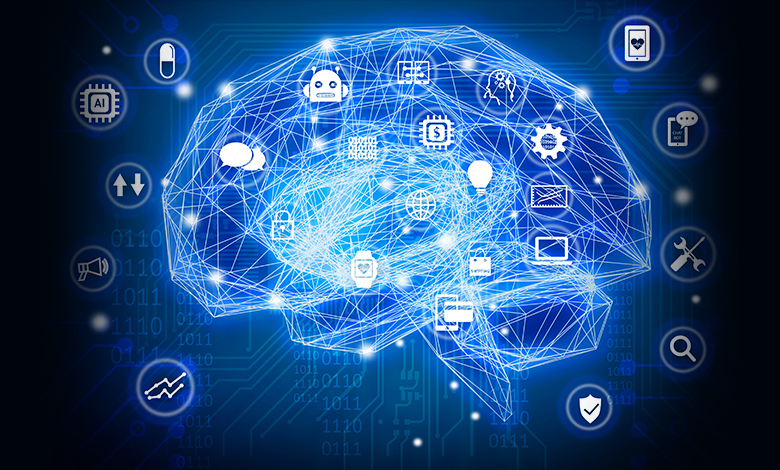The technology world is abuzz with artificial intelligence. Not a day goes by without encountering a news article, a vendor, an employee, or even an uncle at a family BBQ who expresses how AI is transformative, is integral to the solution being proposed or sold, or is about to take on the world akin to Skynet. So little is known about something so widely talked about—and for me, encountering such interactions makes for a more interesting read on behavioral psychology than anything else.
The field of AI is broad and varied and while not ubiquitous, it has been around for decades. On a personal level, I often look at AI more as advanced computational mathematics and algorithms than anything truly new. It is Moore’s Law that has enabled us to make its application more commercially viable. The combination of data and processing power acting as catalysts for an AI renaissance, with the democratization of advanced computational mathematics providing the underpinnings. It is this alignment that drives AI.
What is ironic, is that the more you learn about AI, the less likely you are to use the term “AI” when describing its application. That is because, in many ways, AI is best understood to be a field of study, not a particular computational construct. Machine learning, distinction between a Neural Network and Deep Neural Networks, associated algorithms like Random Forest, Decision Tree, Naive Bayes Classification, and languages—like Python, Lisp, Java, R., Scala, etc., with their packages—are more the jargon for true AI practitioners. Classifiers (image and data) and Natural Language Processing are examples of their application or workload.
One thing is certain, AI will help us address the Big Data challenge. Its constituents will help us transform machine-human interaction in years to come. However, this transformation is likely to be evolutionary—not revolutionary—with the evolutions gaining speed and momentum over time, as unsupervised learning (where AI systems learn through evolutionary algorithms, or learn from each other) outpaces our ability to control its progression and intelligence. It’s at this point that the proverbial genie will be out of the bottle. This is likely to occur without much fanfare, but its implications for our species will be profound.
Today, applied AI still falls short of independently solving complex problems, and will likely, for the near future at least, be relegated to attacking mundane classification challenges around large datasets or enabling machines to learn human languages. With wireless communications and connectivity becoming faster (the eventual 5G implementation), this capability will come closer to the edge, making our machines smarter and enabling a more meaningful interaction with historically dumb machines. However, with time, the rate of improvement will accelerate, and transformation into more complex and intelligent machines is a foregone conclusion. A good analogy to describe this change-process, would be the flywheel effect—where with every push, the wheel gains momentum and speed, and each subsequent push becomes easier. AI’s evolution is likely to follow such a path, with the flywheel being unstoppable.
Autonomous machines and artificial decision-making also raise many legal and ethical questions that will define our own evolutionary process as a species. Failure to recognize the importance of these decisions early enough, in AI’s evolutionary process will have consequences for us all. While I am an optimist in our ability to harness the power of AI for the good of humankind in the short term, I remain concerned around our ability to harness AI in a socially and ethically sound manner over the long run. Will our hubris cloud our judgment in truly understanding the non-captive nature of this evolutionary plane?
This editorial is the first in a series of AI-themed articles that is meant to thoughtfully examine these topical questions, and to detail AI’s incredible potential to affect change. Our series will explore examples of applied AI and its interplay with areas such as big data, predictive modeling, classification, and language processing. We will identify and examine the global leaders in AI and their offerings. Companies, such as IBM, Microsoft, HPE, Google, Amazon, and others, are striving to stake their claim and capture market share in this technical plane. How will they bring their innovations to market, and what impact might these technologies have on people, businesses, or governments? Separating fact from fiction, we will outline how effective these offerings are, as well as their commercial viability and utility for specific tasks. Throughout this process, we will call out the distinction of AI-based services offered from vendors as outlined above, versus consumables delivered by companies like Apple, Facebook, and Netflix. High-profile innovators in this space, such as Netflix, Facebook, and Microsoft, provide perhaps some of the more compelling application of AI in their advancement and enhancement of machine-human interfaces.
Over the course of this series, we will provide our readers with an objective view on what we consider to be the four constructs of applied artificial intelligence: Infrastructure; the Software Plane; Toolsets and Toolkits; and the Proprietary Engines of AI Implementation. Finally, we will examine how applied AI can help address challenges in areas of big data, classification, edge computing, and decision making—and which vendors and frameworks offer the best opportunities for successful implementations.
I hope you’ll join us for the remainder of this AI-themed article series. By the end of our journey together, you’ll be well-equipped to provide meaningful insights the next time AI comes up in a meeting—and to dispel any AI myths that Uncle Larry feels compelled to share at the next family cookout.

